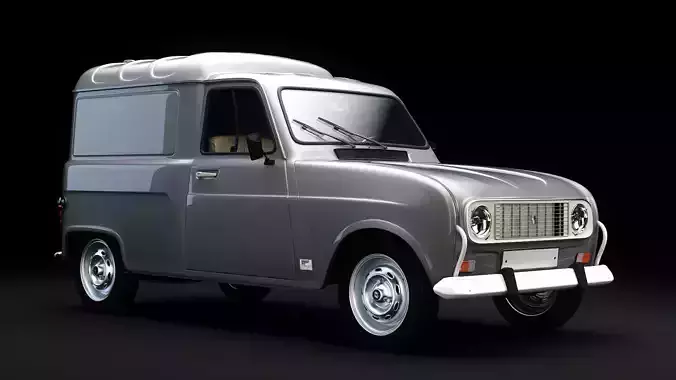1/6
The output of the 4L van is almost simultaneous with that of the sedan. If the 4L is presented at the Paris Motor Show in October 1961, the advent of the utility version is more discreet. However, it is also available in different versions: R3, R4 and 4L. It comes to compete with the 2CV utility and replace the aging JuvaQuatre break.
From the sedan, it shares the front: the engines, the body, the finishes of the R3 or R4, the passenger seat is however optional. However, the R3 version does not seem to have gone beyond the presentation model stage. Behind the front doors, a box replaces the usual bodywork offering increased volume and a wide vertical door with side opening. Note that the location of the handle is hinges is reversible so that, depending on the desires of customers or markets, offer an opening to the right or left. Above the door, an optional extra opening, called a giraffe, opens the door or loads long pipes, planks, etc. The van allows a payload of 300 kg, aided by strengthened torsion bars and a wider tire (145 instead of 135). In 1964, Renault offers a glazed version of its van, with a rear seat, and folding front seats. In 1966, the payload climbs to 350 kg.
REVIEWS & COMMENTS
accuracy, and usability.






